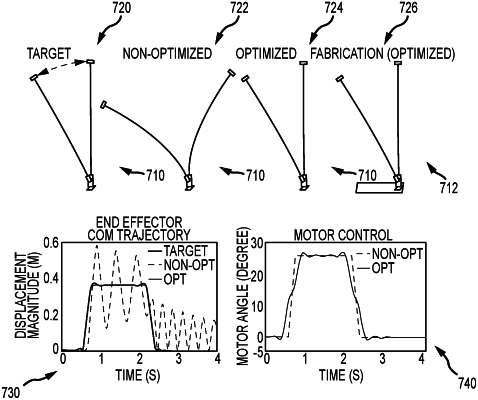| CPC B25J 9/163 (2013.01) [B25J 9/1669 (2013.01)] | 18 Claims |

|
1. A robotic system configured for real-time vibration-suppressing control, comprising:
a plurality of components connected by mechanical joints, wherein a subset of the components is modeled as rigid bodies and a subset is modeled as flexible bodies and wherein a subset or all of the mechanical joints is modeled as flexible joints;
memory storing input comprising unfiltered control parameters specifying motion of the components over a time period;
a plurality of actuators operable in response to control signals to impart the motion of the components over the time period; and
a controller comprising:
a processor communicatively linked to the memory;
an optimizer provided by the processor running software, wherein the optimizer generates filtered control parameters defining a retargeted motion for the components by adjusting the defined motion to suppress vibrations, wherein the optimizer is trained via machine learning based on a set of training data prior to generating the retargeted motion, and wherein the controller generates the control signals for operating the actuators based on the filtered control parameters,
wherein a first portion of the machine learning is performed prior to operations of the controller to generate the control signals and is halted during the operations to generate the control signals, wherein the first portion of the machine learning comprises comparisons of target states defined by a plurality of input animations defining motions for the components via operations of the actuators and states determined by a differentiable simulator, wherein the differentiable simulator performs a dynamic simulation of the robotic system performing the retargeted motions with the components, and wherein the dynamic simulation predicts the vibrations for the robotic system in performing the retargeted motion.
|